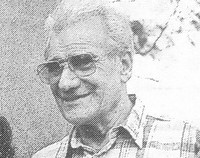The story of Jan (Johannes Wilhelmus Theodorus) and Toos (Catharina) Janssens is a vivid reflection of the Dutch migrant experience in Australia after the Second World War. Together, their recollections offer a rare and intimate portrait of growing up in the Netherlands during the turbulent 1930s and 1940s, the challenges of emigration, and the building of a new life in Australia. The family have captured their stories in two separate booklets. Below are the abstracts from those stories.
Abstract: From Tulips to Gumtrees – The life of Catharina (Toos) Janssens-Adema
Toos Janssens-Adema’s memoir, From Tulips to Gumtrees: Chapters of My Life, paints an intimate portrait of a Dutch childhood, wartime survival, and the postwar journey of migration to Australia.
Born in 1930 in Leeuwarden, Friesland, Toos grew up in a bustling household of thirteen children, where music, faith, and family life shaped her earliest memories. She recalls a childhood filled with piano sing-alongs, skating on frozen canals, and playful evenings with siblings and neighbourhood friends. Her reflections bring to life the rhythm of Dutch family life before the Second World War, including Sunday church rituals, visits to grandparents, and the warmth of a home where siblings shared beds and stories.
The memoir takes a darker turn with the German occupation of the Netherlands. Toos recounts the fear and disruption of wartime life: rationing, air raids, the hiding of older brothers to avoid forced labour in Germany, and the silent acts of courage performed by ordinary Dutch families. Despite hardship, her memories also reveal moments of light—family unity, music, and small celebrations that punctuated years of uncertainty.
After the war, Toos’s story shifts toward hope and adventure. She reflects on courtship, marriage to Jan Janssens, and the courageous decision to leave the Netherlands for Australia in search of new opportunities. Her later chapters chronicle the realities of migrant life: adapting to a new country, building homes, raising children, and maintaining the cultural ties of her Dutch heritage while embracing the Australian landscape.
This memoir is both a personal family document and a reflection of the broader Dutch postwar migration story. Through Toos’s words, readers experience the intimate joys and struggles of a life lived across two continents, framed by resilience, family devotion, and the enduring optimism of starting anew.
Abstract: Een Ongekend Leven – The life of Johannes (Jan) Janssens
Jan Janssens’s autobiographical account, Een Ongekend Leven – A Life Untold, offers a complementary perspective to his wife Toos’s story, tracing his journey from a lively Dutch childhood to a life of technical achievement and family-building in Australia.
Born in 1930 in Eindhoven, Jan grew up in a Catholic family of seven children during a time of economic constraint and political upheaval. His early memories capture a childhood of outdoor games, family walks, and the discipline of home responsibilities, alongside the strict influence of the Catholic Church. His youth was shaped by both affection—particularly from his mother and sister Jo—and the structured discipline of his father, a local police officer.
The Second World War forms a defining chapter in his narrative. Jan recalls the tension and deprivation of wartime Eindhoven, the disruption of schooling, and the ever-present danger as the city experienced occupation and eventual liberation by American and British forces. The move to a larger house in 1943, formerly occupied by a Jewish family, symbolised both the challenges and moral complexities of living under occupation.
Jan’s story extends into the postwar years of study, work, and self-discovery. He pursued commercial and technical education, eventually joining Philips Industries, where he developed expertise in electrical engineering—a skill set that would open doors internationally. In 1951, driven by the desire for independence and opportunity, Jan emigrated to Australia under the Netherlands–Australia Migration Agreement. His journey by KLM Constellation aircraft, via Cyprus, India, and the Philippines, marked the start of a new chapter in Bathurst migrant camp and the beginning of his Australian life.
The later sections of his account reflect a life of adaptation and achievement: working in emerging fields of computing and market research, building family life with Toos, and contributing to Australia’s postwar technical workforce. His memoir conveys not only a personal history of migration but also the broader story of Dutch postwar ambition and resilience.
Jan’s arrival in Sydney

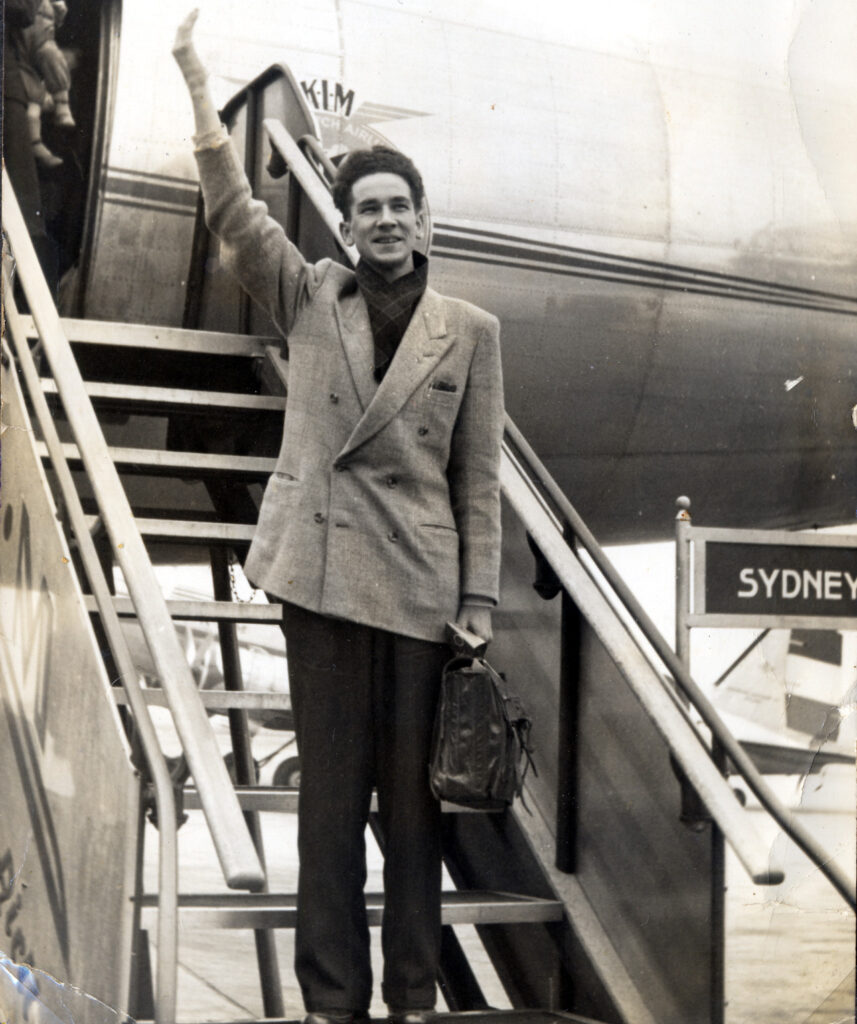
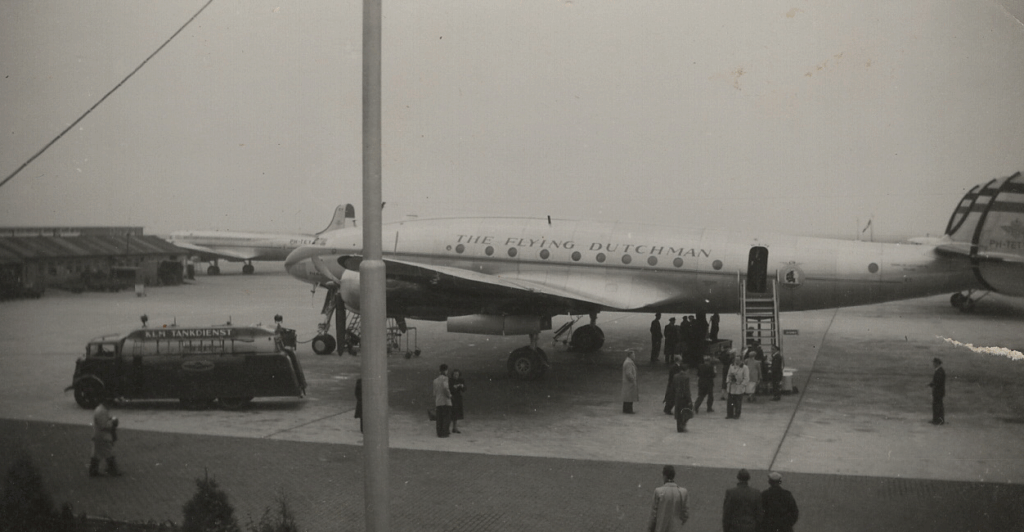
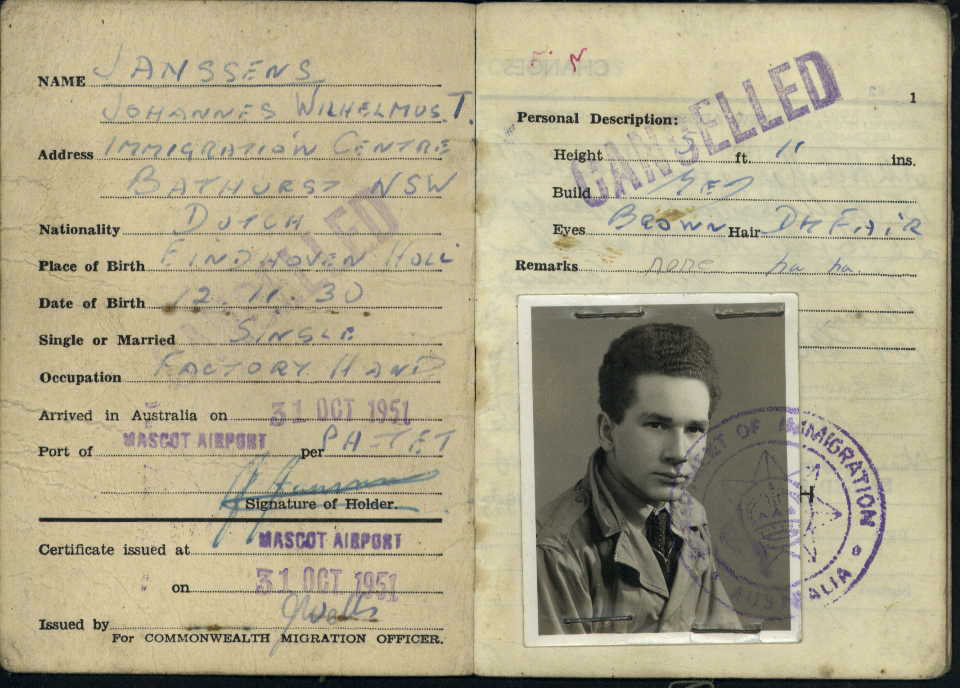
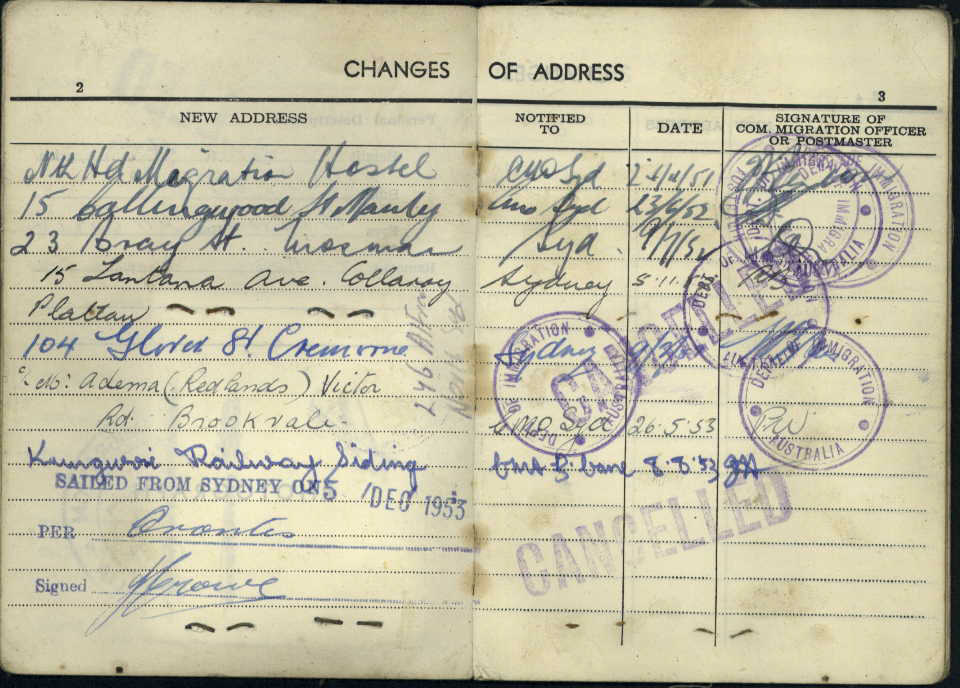
Jan and Toos passed away in 2025, both aged 95 and only two months apart.
Archival record of Jan’s immigration
A third document from the family archives is a collection of documents from the National Archives of Australia, they provide the official framework behind these personal stories. It documents the practical steps of postwar migration: medical checks, travel arrangements, and settlement procedures that underpinned the broader Dutch-Australian migration story.
Together, these three sources offer a rich narrative tapestry of memory and history—personal reflections grounded in family heritage and national archival records—illustrating how Dutch migrants like Jan and Toos Janssens became part of Australia’s postwar social fabric.


